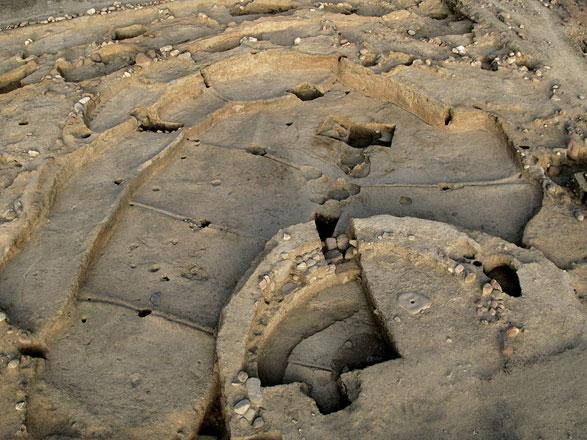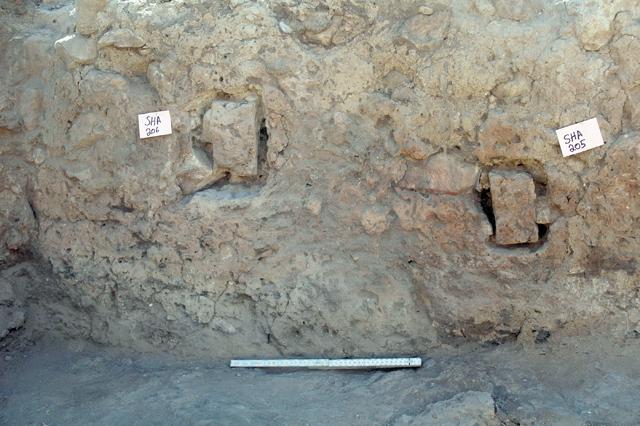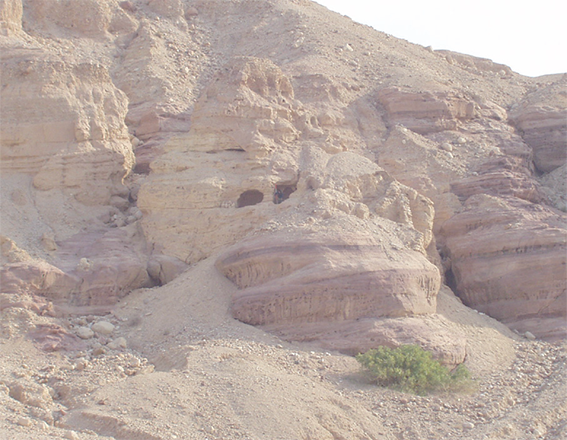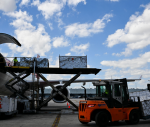You are here
Early Agriculture: insights into Sharara settlements
By Saeb Rawashdeh - Jul 18,2024 - Last updated at Jul 20,2024
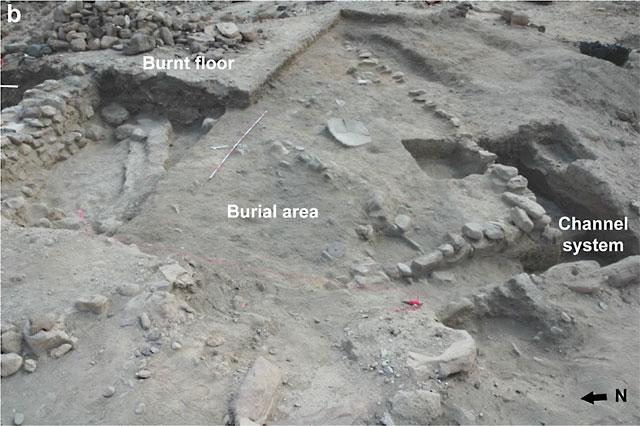
Excavation in Sharara conducted in 2017 (Photo courtesy of Sharara Project)
AMMAN — Sharara is a Neolithic settlement located 10 kilometres east of the southern tip of the Dead Sea, in Wadi Hasa, and provides a route between the rift valley and Jordanian Plateau.
The climate of the Wadi Hasa is characterised by very hot, dry summers and cooler, wetter winters. Due to the arid nature of the area, vegetation in the lower Wadi Hasa is generally sparse and dominated by dwarf shrubs, such as Artemisia herba-alba (white wormwood).
The Early Pre-Pottery Neolithic site of Sharara consists of a loose scatter of structures spread over an area of around 0.5 hectares, and during three seasons of excavations between 2016 and 2019 the research team focused on the western portion of the occupation where a series of stone structures corresponding to multiple phases of construction were uncovered, along with associated human burials.
"Among the structures identified was a sub-circular stone-built structure, probably semi-subterranean, that had been altered by numerous re-modelling events and more recently damaged by illicit excavations," said the professor Bill Finlayson from The University of Oxford, adding that the latest iteration of this structure was approximately 4 metres in its internal diameter and featured a large cup-hole mortar set into a mud-plaster floor.
Furthermore, the fill of the structure was outstandingly rich in charred plant remains and burnt structural material, indicating that it had collapsed as the result of a catastrophic fire, Finlayson speculated, adding that other evidence showed that a structure was heavily burnt including the red baked face of the wall plaster and blackening of the floor surface and cup-hole mortar.
In the southern part of the excavation area, Finlayson continued, a feature was uncovered that consisted of two channels running perpendicular to each other before joining up.
"These channels appear to have been constructed sometime after the previous structure, as part of a phase of extensive re-modelling at the site that also saw the area between these levelled out," the scholar explained.
Meanwhile, a total of 93 archaeobotanical samples representing 50 unique depositional events (contexts) were collected at Sharara between 2016 and 2019, as part of a systematic sampling programme.
"Twenty-one samples, including all nine samples collected in 2016, were hand-picked in the field, being visible as discrete deposits of charred plant remains during excavation. The remaining 72 samples were collected as bulk sediment samples (total 891 l) and processed by bucket flotation," Finlayson said, adding that prior to flotation, sediment samples were dry sieved through a 4 millimetres (2017 season) or 1 centimetre (2019 season) mesh to recover any larger plant macrofossils, such as fig fruits and wood charcoal.
This additional step was taken to minimise potential damage and fragmentation of charred plant remains during flotation, which has been a significant recovery issue at other PPN sites in the Wadi Hasa, Finlayson elaborated, adding that the sieved sediments were then processed by bucket flotation using a mesh with an aperture of ca. 250 μm to collect any floating plant material.
"The charred macro botanical assemblage from Sharara is largely comprised of cereals, pulses, figs and pistachio nut lets. We regard these as staple foods that were consumed at the site, based on their edibility, high proportions relative to other taxa represented in the assemblage, and evidence for their storage and processing," Finlayson underscored.
Related Articles
AMMAN — Two British archaeologists, Steve Mithen and Bill Finlayson studied the early Neolithic site of Wadi Faynan, situated some 250
IRBID — Communal buildings in Sharara, a site located in Wadi Al Hasa which overlooks the southern part of the Dead Sea, during Pre-Pottery
AMMAN — Palaestina Tertia, a late Roman-Byzantine province, was well known for its monastic life.


